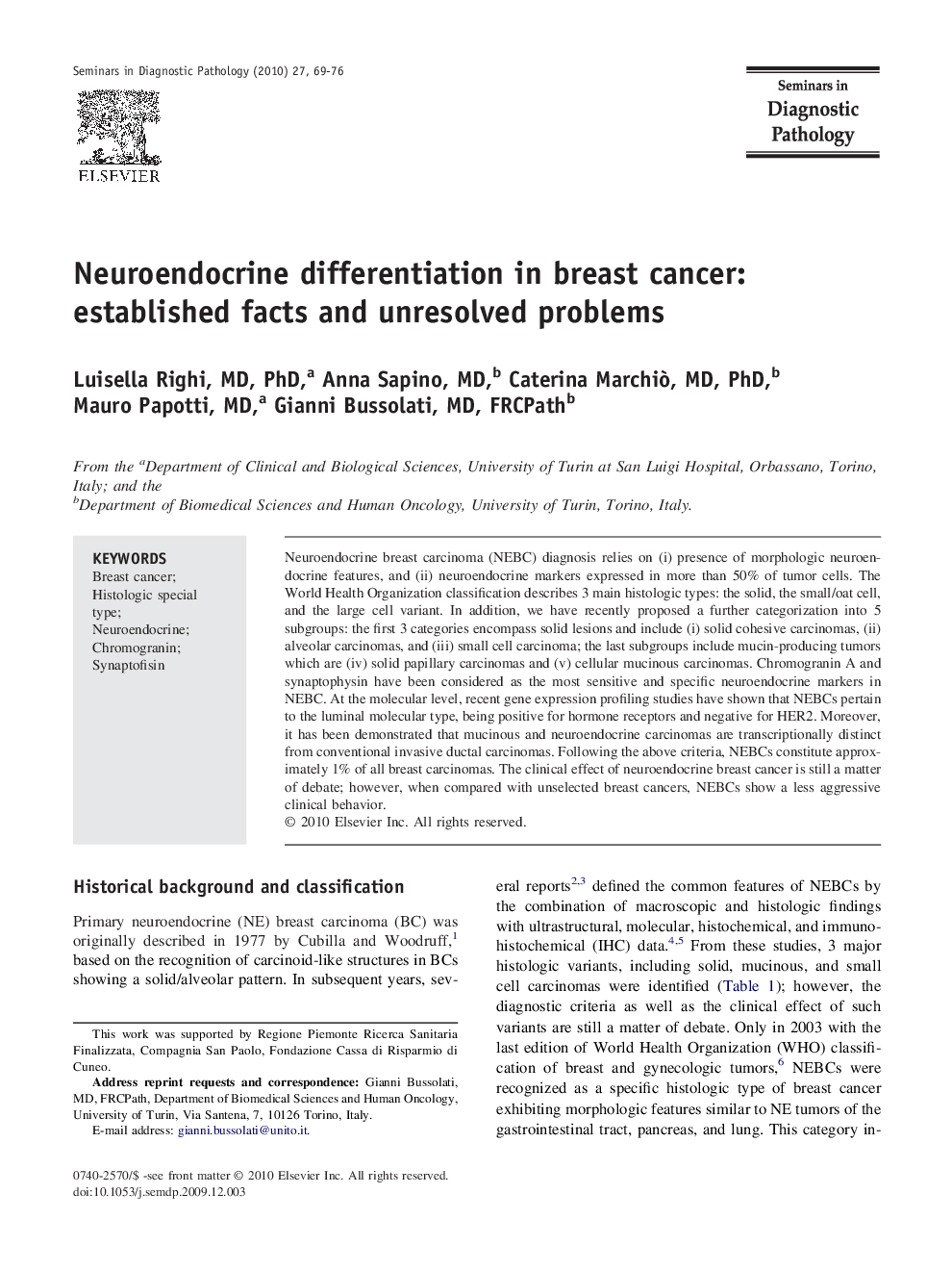| Article ID | Journal | Published Year | Pages | File Type |
|---|---|---|---|---|
| 4138480 | Seminars in Diagnostic Pathology | 2010 | 8 Pages |
Neuroendocrine breast carcinoma (NEBC) diagnosis relies on (i) presence of morphologic neuroendocrine features, and (ii) neuroendocrine markers expressed in more than 50% of tumor cells. The World Health Organization classification describes 3 main histologic types: the solid, the small/oat cell, and the large cell variant. In addition, we have recently proposed a further categorization into 5 subgroups: the first 3 categories encompass solid lesions and include (i) solid cohesive carcinomas, (ii) alveolar carcinomas, and (iii) small cell carcinoma; the last subgroups include mucin-producing tumors which are (iv) solid papillary carcinomas and (v) cellular mucinous carcinomas. Chromogranin A and synaptophysin have been considered as the most sensitive and specific neuroendocrine markers in NEBC. At the molecular level, recent gene expression profiling studies have shown that NEBCs pertain to the luminal molecular type, being positive for hormone receptors and negative for HER2. Moreover, it has been demonstrated that mucinous and neuroendocrine carcinomas are transcriptionally distinct from conventional invasive ductal carcinomas. Following the above criteria, NEBCs constitute approximately 1% of all breast carcinomas. The clinical effect of neuroendocrine breast cancer is still a matter of debate; however, when compared with unselected breast cancers, NEBCs show a less aggressive clinical behavior.
